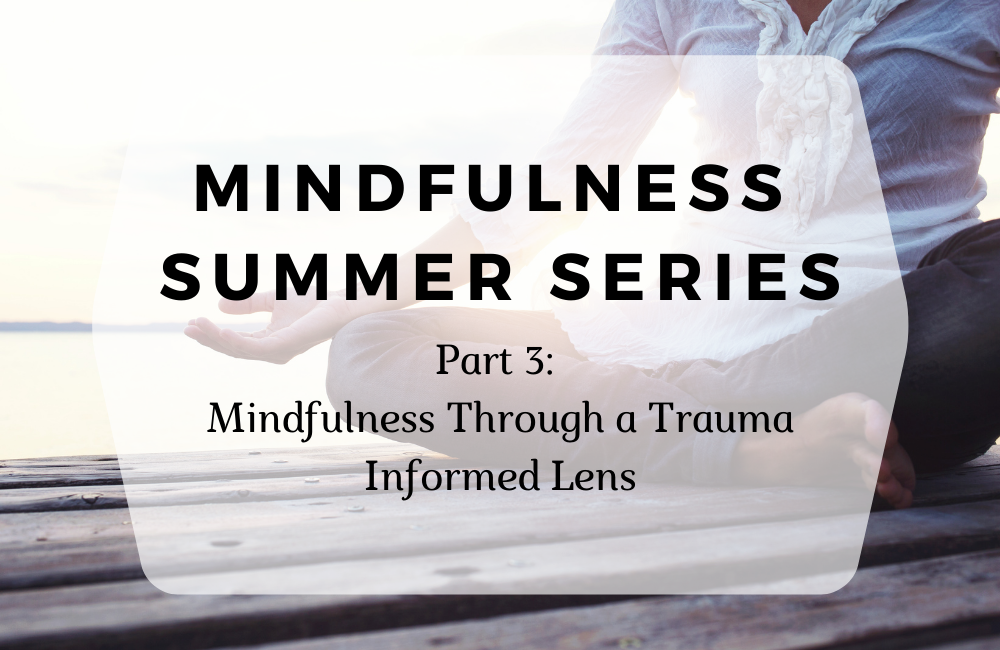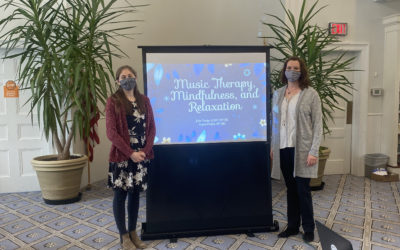In Part 2 of our Summer 2021 Mindfulness Blog Series, we focused on the first three of six important considerations when beginning mindfulness and its safety for everyone. Today we will explore the last three of six, to share our view of the best way to practice mindfulness and identify any safety concerns for you, your child, or loved one.
It is important to note that 70% of adults in the U.S. have experienced some type of traumatic event at least once in their lives. That’s 223.4 million people. When considering this high percentage, we always want to err on the side of caution when asking people to close their eyes and invite them to imagine, see visualizations, or even left to just notice the silence.
Is mindfulness a safe practice for everyone? These final considerations are the most critical when leading a mindfulness group or encouraging an individual to begin using mindfulness practices.
Group presentations of mindfulness should be conducted very carefully
- Many teens share with us that they have been required to participate in mindfulness in one or more of their classes at school. Some mention that they have felt panicked doing everything in their power to escape the room or be sick the days of those classes.
- Some have grown to think of mindfulness as something that is not for them. Frequently this is because it was not tailored to their needs. Instead, they associate it with a large group of people in a room closing their eyes required to listen to sounds, music, a script, or silence, which is a very narrow understanding of the practice.
Individuals who have experienced past or recent trauma should participate with caution.
- It is highly recommended that a professional work with adults or children who have experienced trauma to help them find the right type of mindfulness activities. Most of the time the activities will not include closing eyes or open meditation initially, but instead will work more on sensory mindfulness. We will share more about this in Part 4 of our series.
- A professional will often assist an individual in finding their calm place with evidence that they able to successfully visualize and stay in this place without their mind wandering. This can be a very powerful mindfulness tool when properly created and practiced. The trained leader will also be sure that the individual is not experiencing any forms of dissociation prior to teaching these methods.
Every person needs to remain within their window of tolerance.
- Earlier we mentioned that clients have shared with us that they left a mindfulness group activity in a panic. This is an example of someone being drawn out of their window of tolerance without assistance provided to help them find their way back. No one would create this situation on purpose; however, it can be a direct result of opening mindfulness in a group forum without contingencies for individuals to opt out if necessary.
- The window of tolerance is a term commonly used in trauma counseling. It describes the zone of arousal in which a person can function effectively. An individual can feel upset, anxious, or scared, but still be able to function and not be completely highjacked by their emotions. If an individual has not been taught the tools to tolerate distress, there is a good possibility that they may struggle with general mindfulness.
Using a trauma informed lens is imperative when teaching mindfulness however this is not always used by mindfulness leaders. It is our hope that this blog series will help to spread the word to bring higher levels of safety and success to teaching mindfulness practices.
We look forward to sharing our final blog soon of our four-part Summer 2021 Mindfulness Blog Series and hope you will join us.
Nature’s Instruments: Making Music Outside
Spring is finally here! The daffodils are blooming, the Easter bunny made his visits, and families are itching to get out of the house. In the spring, the outside world is full of sounds.
Current Events: Thrive to Survive Workshop
Written by Katie Pistilli, MT-BC This month, Upstate Music Therapy Center employees Erin Triola, LCAT, MT-BC and Katie Pistilli, MT-BC met a wonderful group of people through the Thrive to Survive support group. Katie and Erin conducted a workshop for Thrive to...
Parenting: Finding Calm in the Chaos (Part 2)
Understanding ourselves, why we respond the way we do, can greatly improve our parenting approach
and by doing so increase healthy and helpful interactions with our children. When this happens both
the parents, children, and spousal relationship begin to notice a sense of calm even during the expected
chaotic moments in day-to-day child rearing.




